Brainstem Anatomy and Cranial Nerve Nuclei II
1/14
There's no tags or description
Looks like no tags are added yet.
Name | Mastery | Learn | Test | Matching | Spaced |
|---|
No study sessions yet.
15 Terms
What are the nucleus of the 7th cranial nerve?
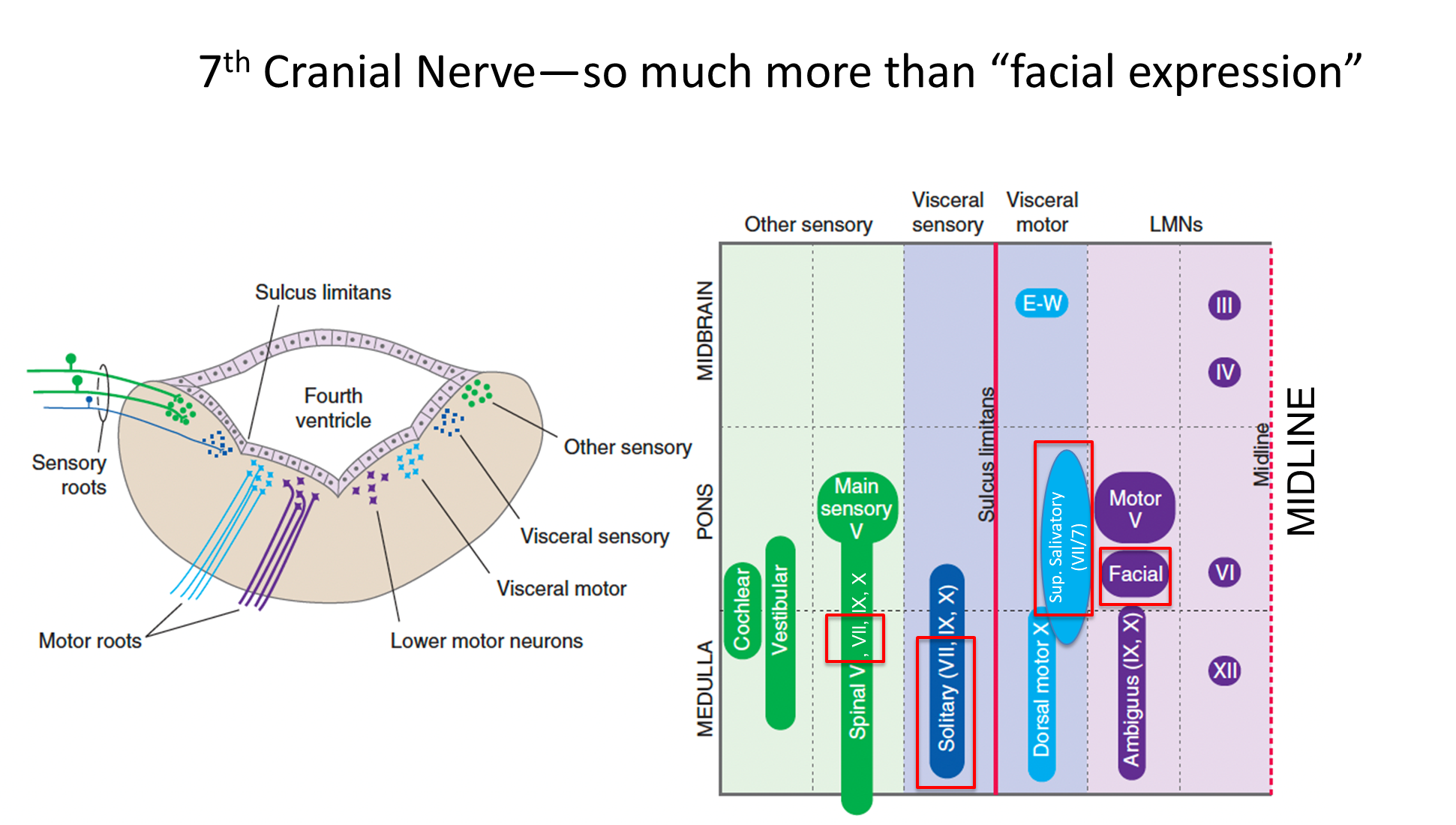
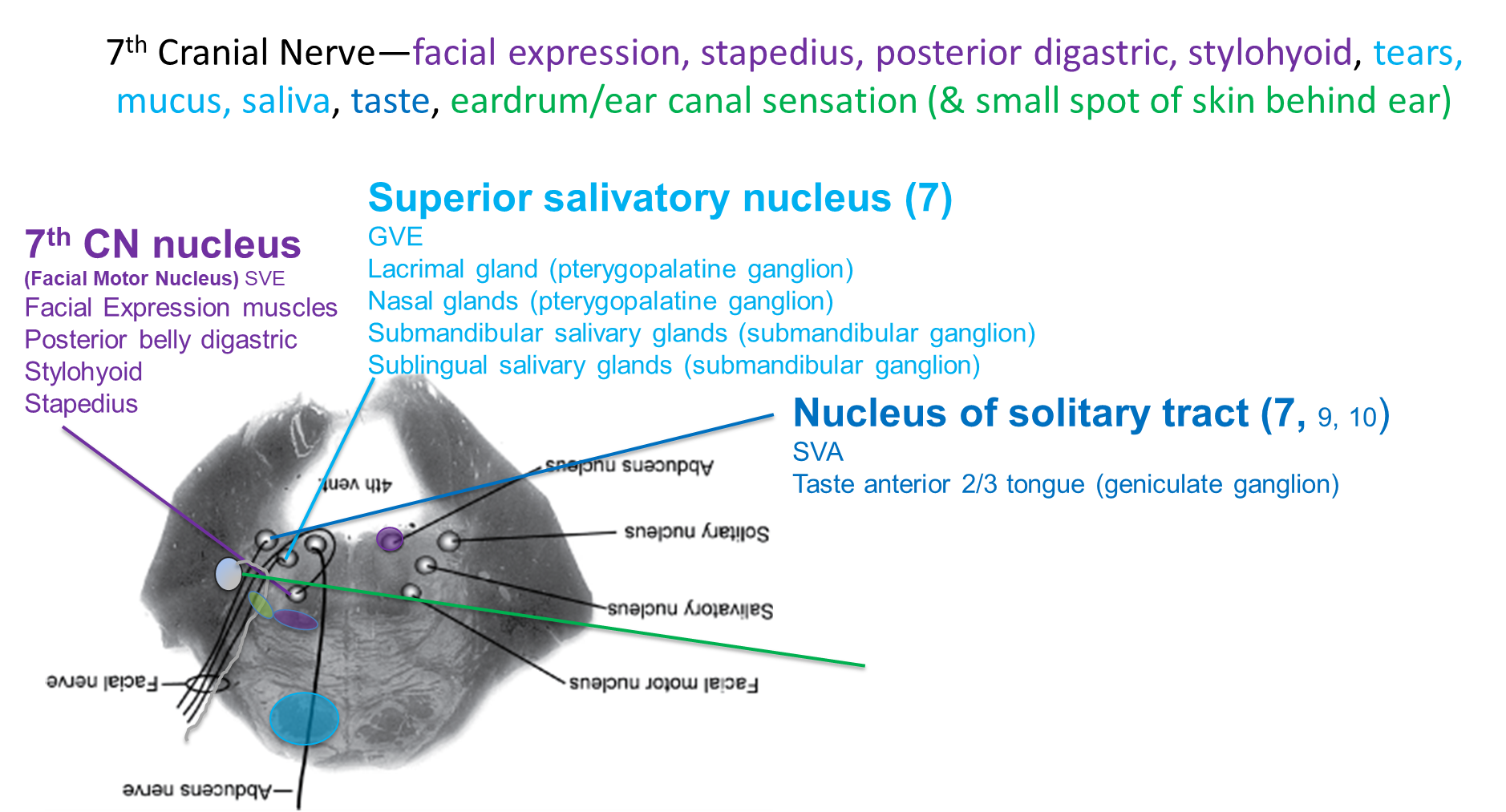
Facial Nerve has both motor and sensory nuclei:
1) Facial Motor Nucleus - SVE
→ located in the pons, where it wraps around the nucleus for CN VI before exiting out
→ controls the muscles of facial expression, stapedius, stylohyoid, and posterior belly of digastric
2) Superior Salivatory Nucleus - GVE
→ located in the pons
→ parasympathetic innervation to the lacrimal (pterygopalatine ganglion)
→ parasympathetic innervation to the submandibular, and sublingual gland (both submandibular ganglion)
3) Nucleus of the Solitary Tract (rostral portion) - SVA
→ medulla
→ taste to the anterior 2/3 of the tongue
4) also carries pain and temperature information from the inner ear and external ear to the trigeminal nerve via the spinal trigeminal nucleus
What is the difference between UMN or LMN 7th Nerve Palsy
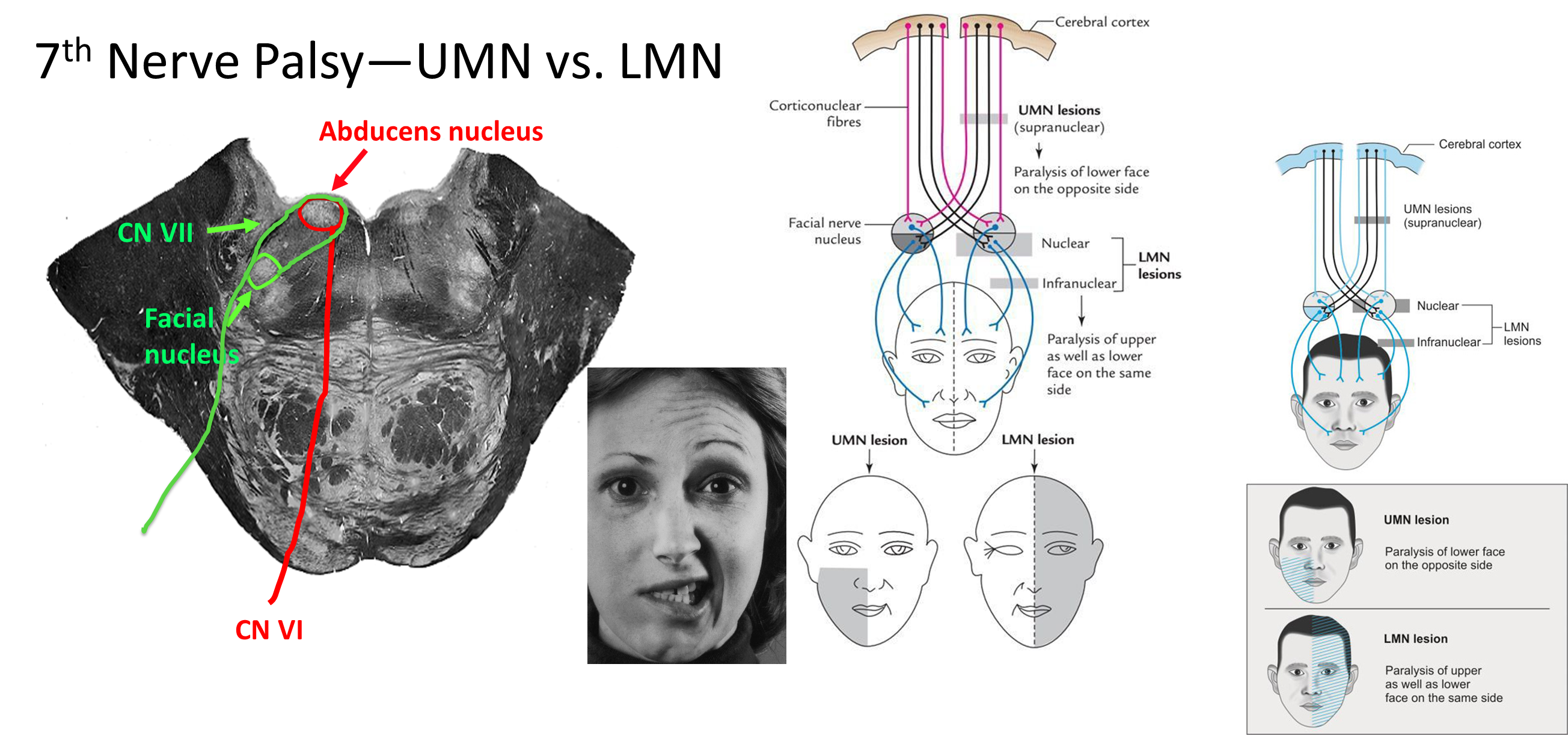
1) UMN
→ receives bilateral corticobulbar inputs from both the right and left hemispheres
→ this means that even when one hemisphere is damaged, the other side will still send out inputs, meaning the facial muscles are only affected on the bottom part of the face
2) LMN
→ the lower motor neurons lack bilateral innervation and project ipsilaterally or only to one side of the body
→ when this is damaged there is complete paralysis of the half of the face
What controls the corneal reflex?
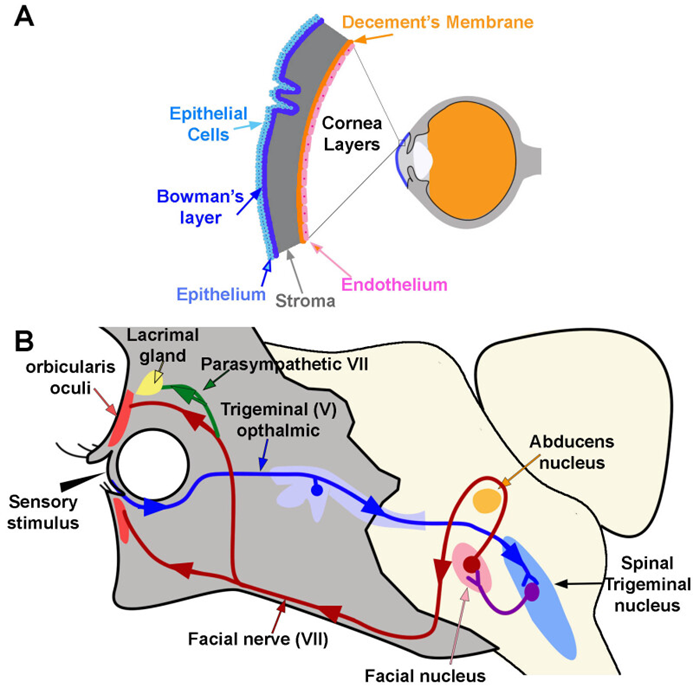
Corneal Reflex/Blink Reflex
1) CN V1 the ophthalmic division of the trigeminal nerve senses the touch of the cornea
→ is a pain sensation so it travels down and synapses at the spinal trigeminal nucleus of five
2) Facial Nerve VII will relay information to the orbicularis oculi to close the eye
What is the Jaw-Jerk Reflex?
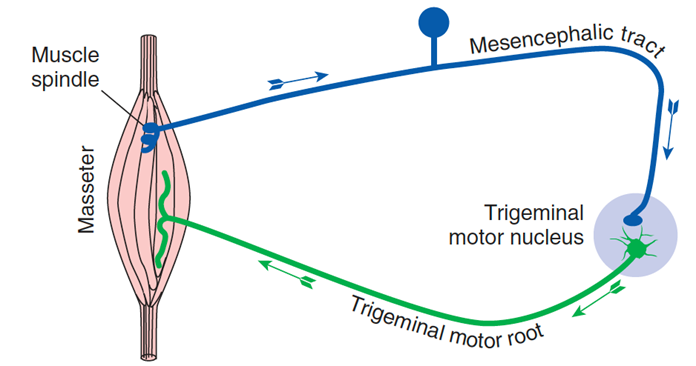
Jaw-jerk is a stretch reflex of the jaw which is present in patients with bilateral upper motor neuron lesions above the pons
→ reflex is controlled by the mandibular branch V3 of the trigeminal nerve
What nuclei is Cranial Nerve IX involved in? (4)
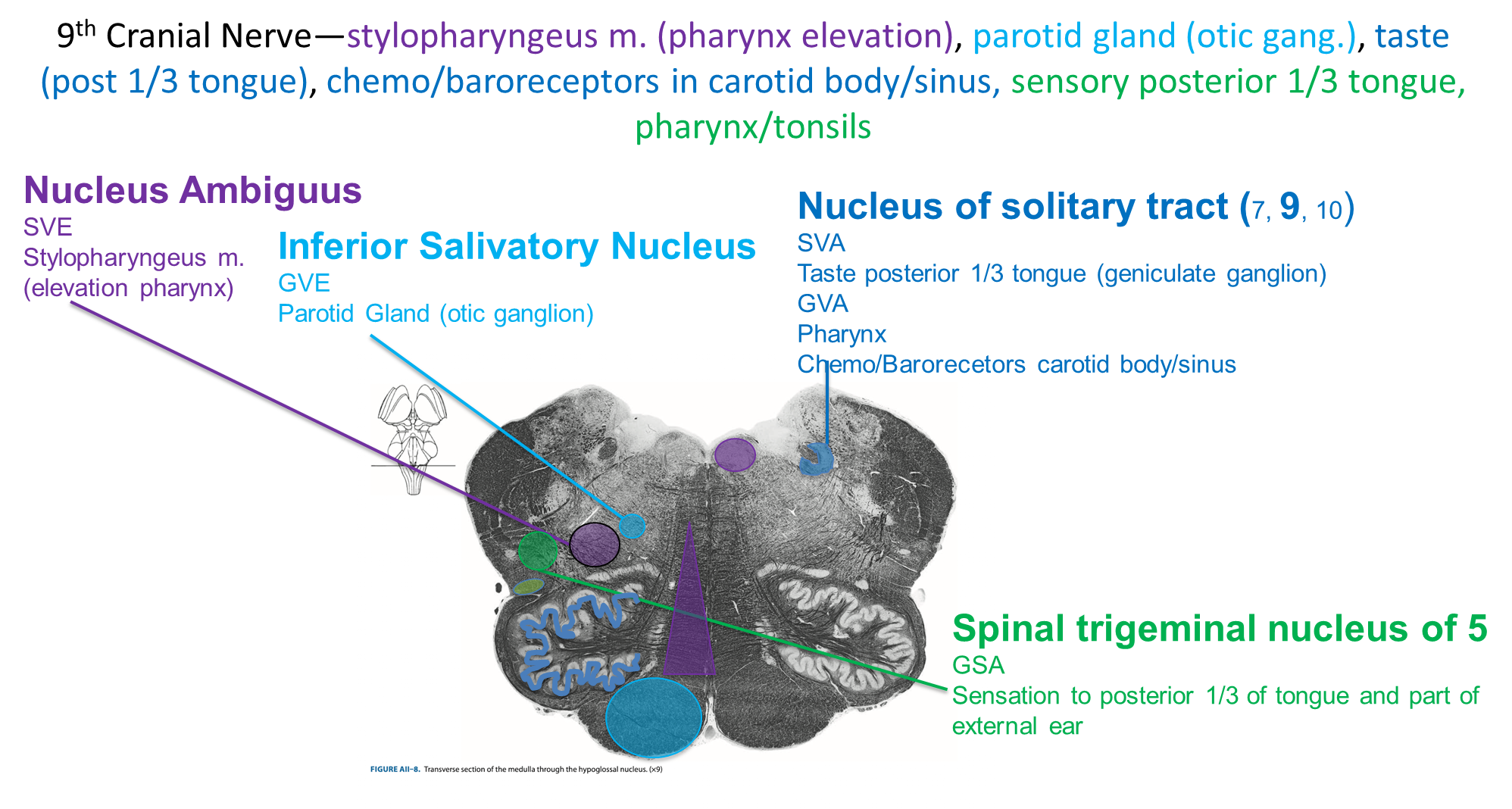
Cranial Nerve IX
1) Nucleus Ambiguus - SVE
→ Stylopharyngeus muscle motor innervation
2) Inferior Salvatory Nucleus - GVE
→ Parotid Gland innervation through the otic ganglion
3) Nucleus of Solitary Tract - subdivided into a SVA and GVA portion
→ SVA in the rostral portion - taste to the posterior 1/3 of the tongue
→ GVA is the caudal portion - visceral sensation from the carotid body and carotid sinus
4) Spinal Trigeminal Nucleus
→ pain and temperature and general sensation from the posterior 1/3 of the tongue and pharynx are transmitted to the spinal trigeminal nucleus of 5
What are the nuclei of the Vagus Nerve?
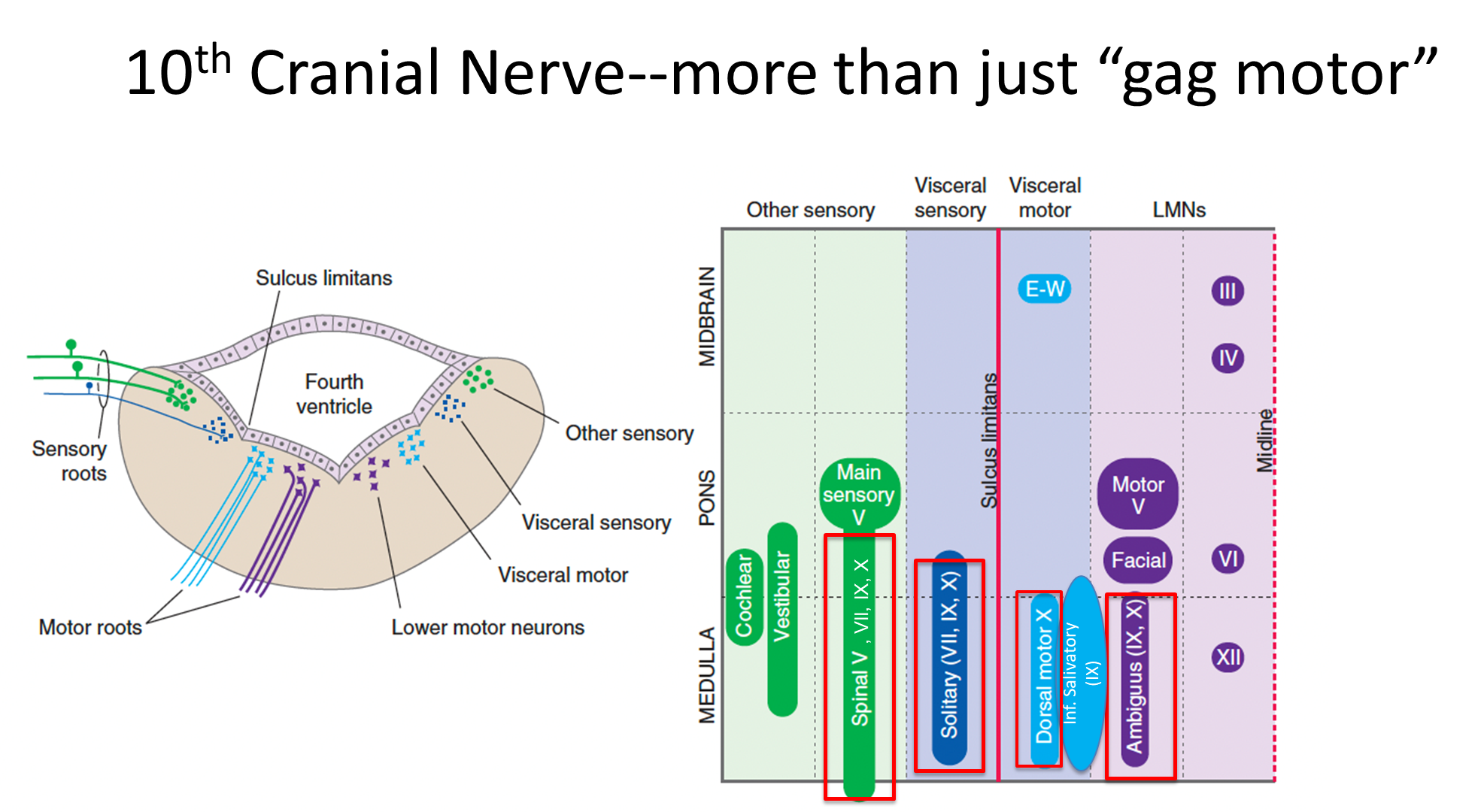
Cranial Nerve X
1) Nucleus Ambiguus - SVE
→ motor to the muscles of the pharynx, larynx, and soft palate
2) Dorsal Motor Nucleus of Vagus - GVE
→ parasympathetics to the thoracic and abdominal cavity up to the splenic flexure
3) Nucleus of Solitary Tract - SVA and GVA
→ SVA - taste from the epiglottis and root of the tongue
→ GVA - sensory to the aortic body (chemoreceptors) and aortic arch (baroreceptors)
4) Spinal Trigeminal Nucleus - GVA
→ sensation from the ear
How do you test for the gag reflex?

Gag Reflex is controlled by the glossopharyngeal nerve (IX) and vagus nerve (X) which control the afferent and efferent arms respectively
1) touching the pharynx will send signals through CN IX through the nucleus solitarius
→ CN X will then allow for motor innervation to the pharyngeal muscles via the nucleus ambiguus
2) lesion of IX will get rid of sensation, while lesion of X will get rid of motor
What is the Nucleus of the Solitary Tract?
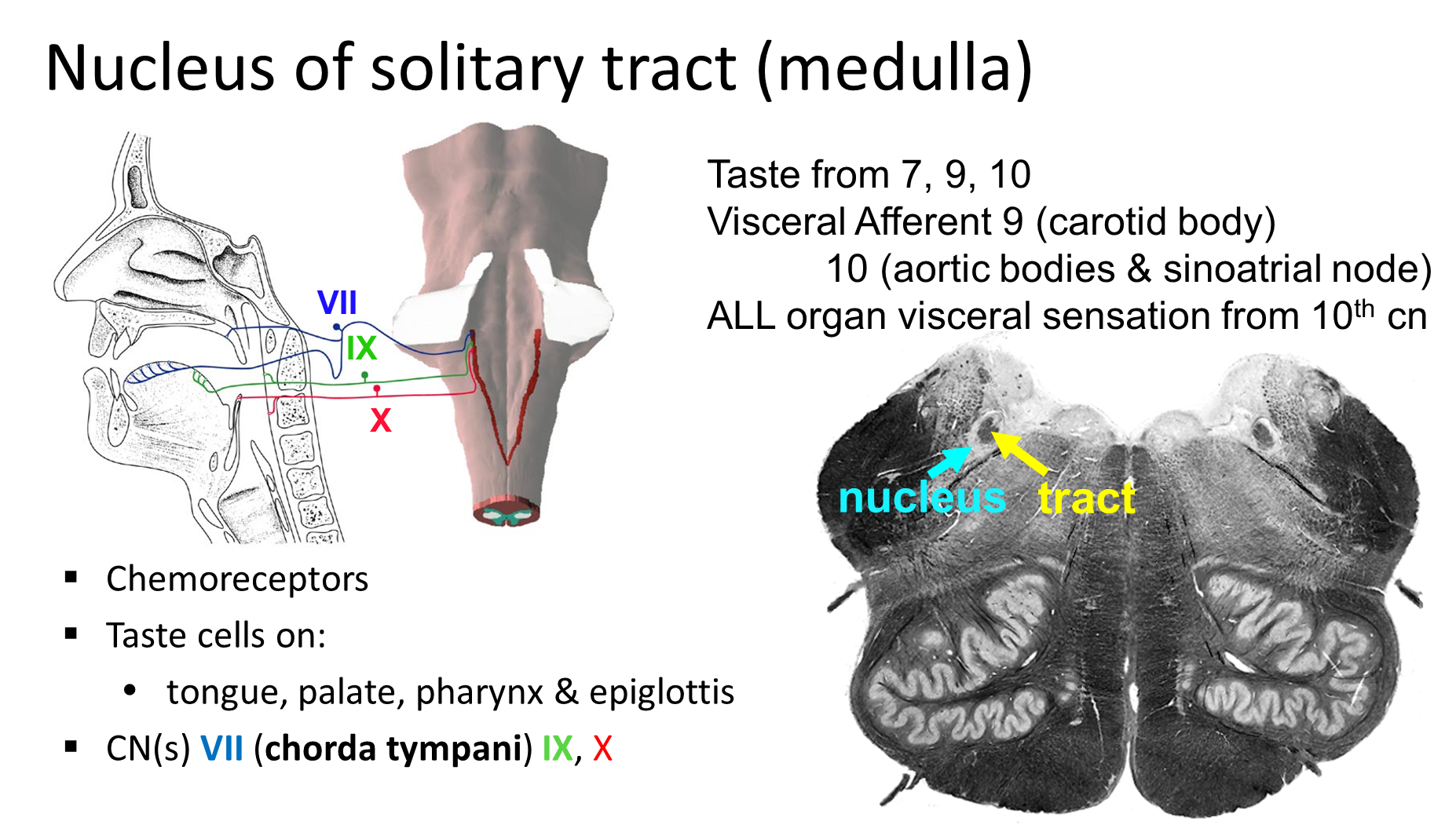
Nucleus Solitarius is a sensory nucleus located laterally in the medulla and is responsible for special visceral afferent nucleus
1) Taste from 7, 9, 10
2) Visceral Afferent from 9 (Carotid Body) and 10 (Aortic Arch) to receive info about BP, pH, and CO2
3) all visceral sensation from the vagus nerve
Why does hearing loss not occur after synapsing at the cochlear nuclei
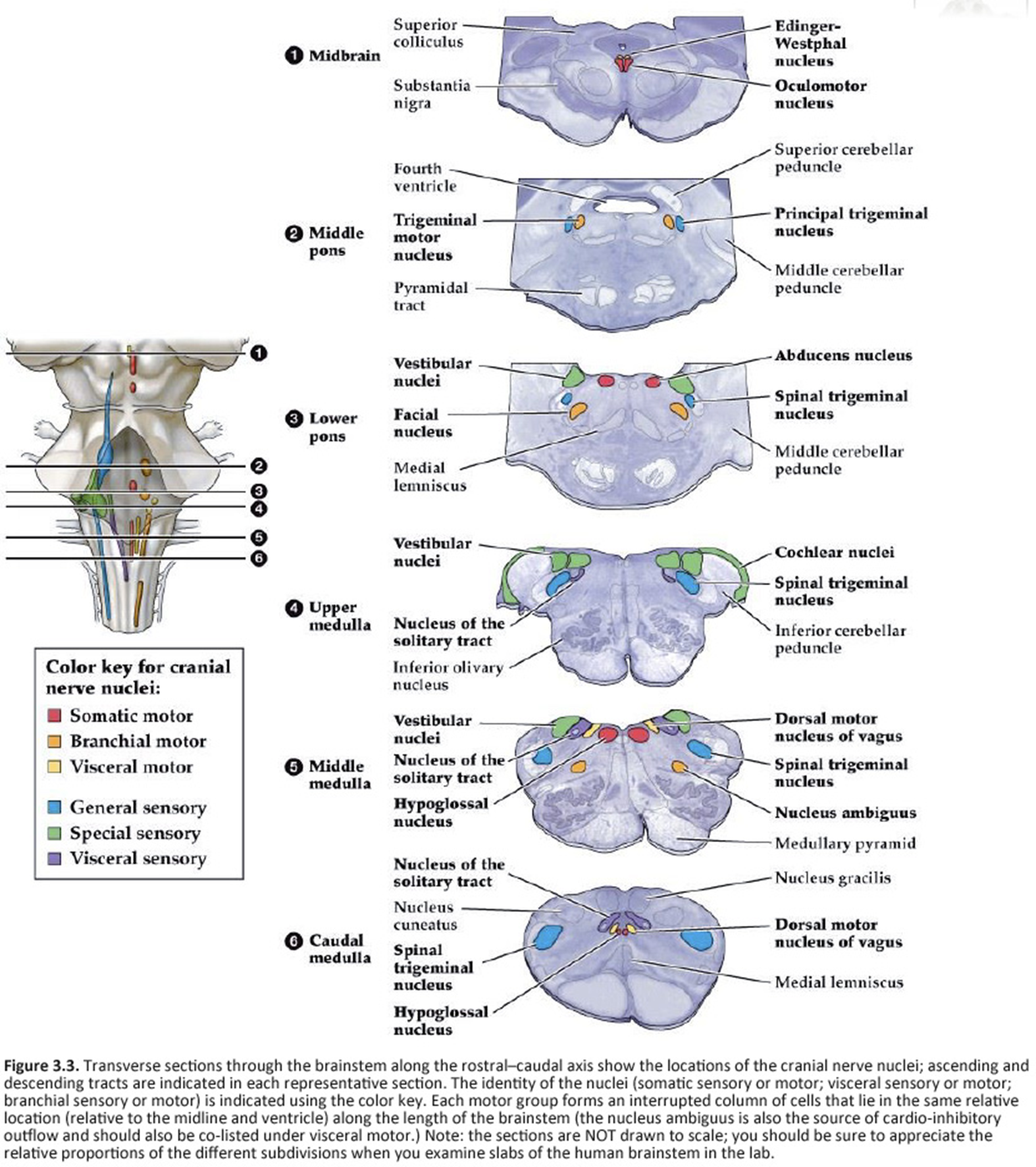
1) Cochlear nuclei are located laterally in the pons and act as the first relay for auditory information from CN VIII or the vestibulocochlear nerve
→ once afferent information reaches the nuclei, the auditory pathway bifurcates
2) because these bifurcated fibers go to both sides of the brainstem, the ears signal is present in both hemispheres
→ so a lesion on one side would not fuck up your hearing
What is the Rule of Four?
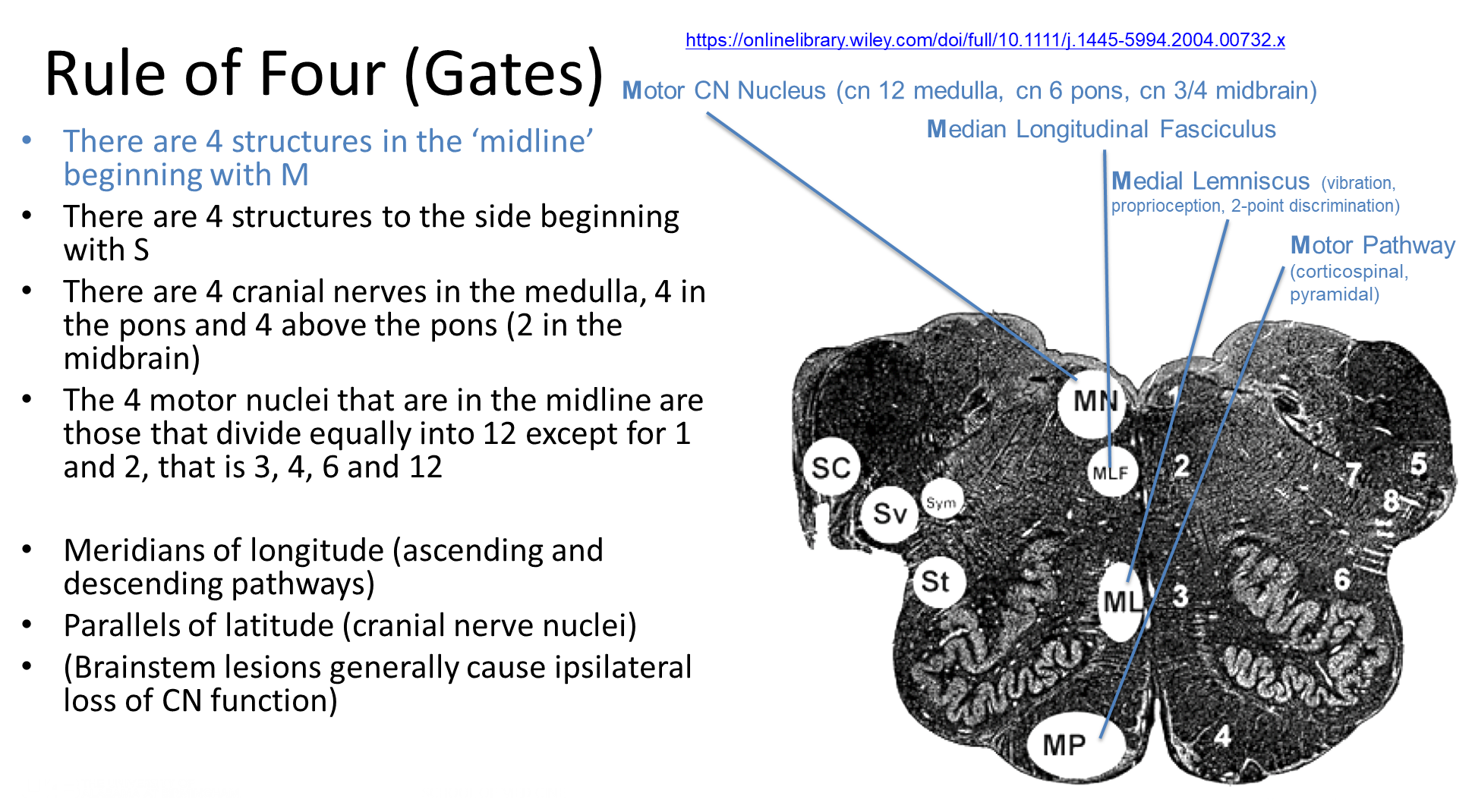

4 structures in the midline that begin with the letter M and are motor (GSE)
→ motor nucleus
→ MLF
→ medial lemniscus
→ motor pathway
4 structures laterally that begin with the letter S
→ spinocerebellar (proprioception to the cerebellum)
→ sensory nucleus
→ sympathetic
→ spinothalamic
What is the Tectum and Tegmentum?
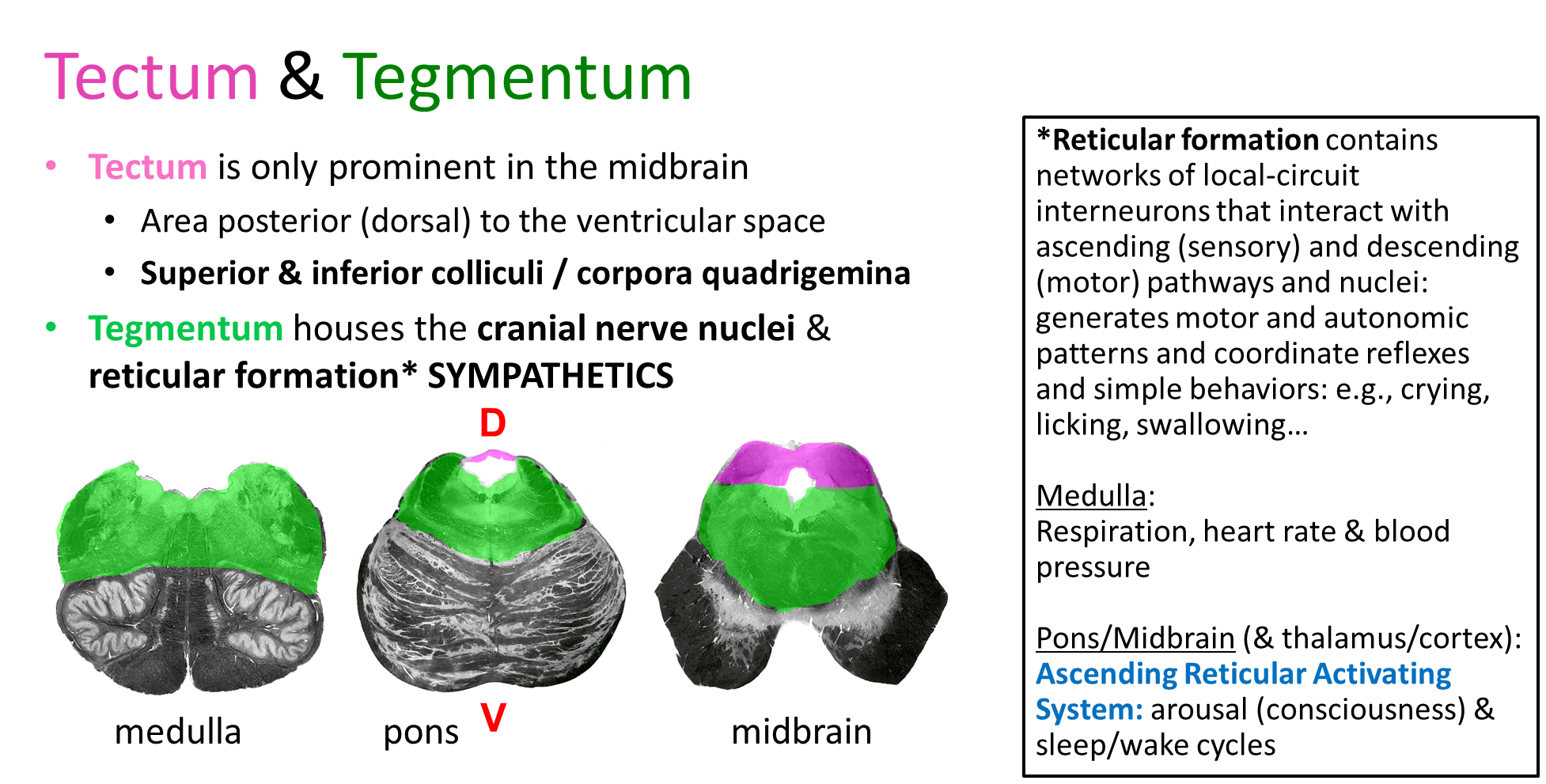
Tectum is the superior and inferior colliculi of the midbrain
Tegmentum is the ventral portion in front of the cerebral aqueduct
→ houses the cranial nerve nuclei
→ reticular formation which are interconnected neurons that help coordinate reflexes and simple behaviors
What is Pseudobulbar Affect?
Pseudobulbar Affect is a neurological condition characterized by involuntary episodes of laughing or crying, regardless of emotional state
1) typically caused by bilateral damage to upper motor neurons in the corticobulbar tract
What is the blood supply to the brainstem?
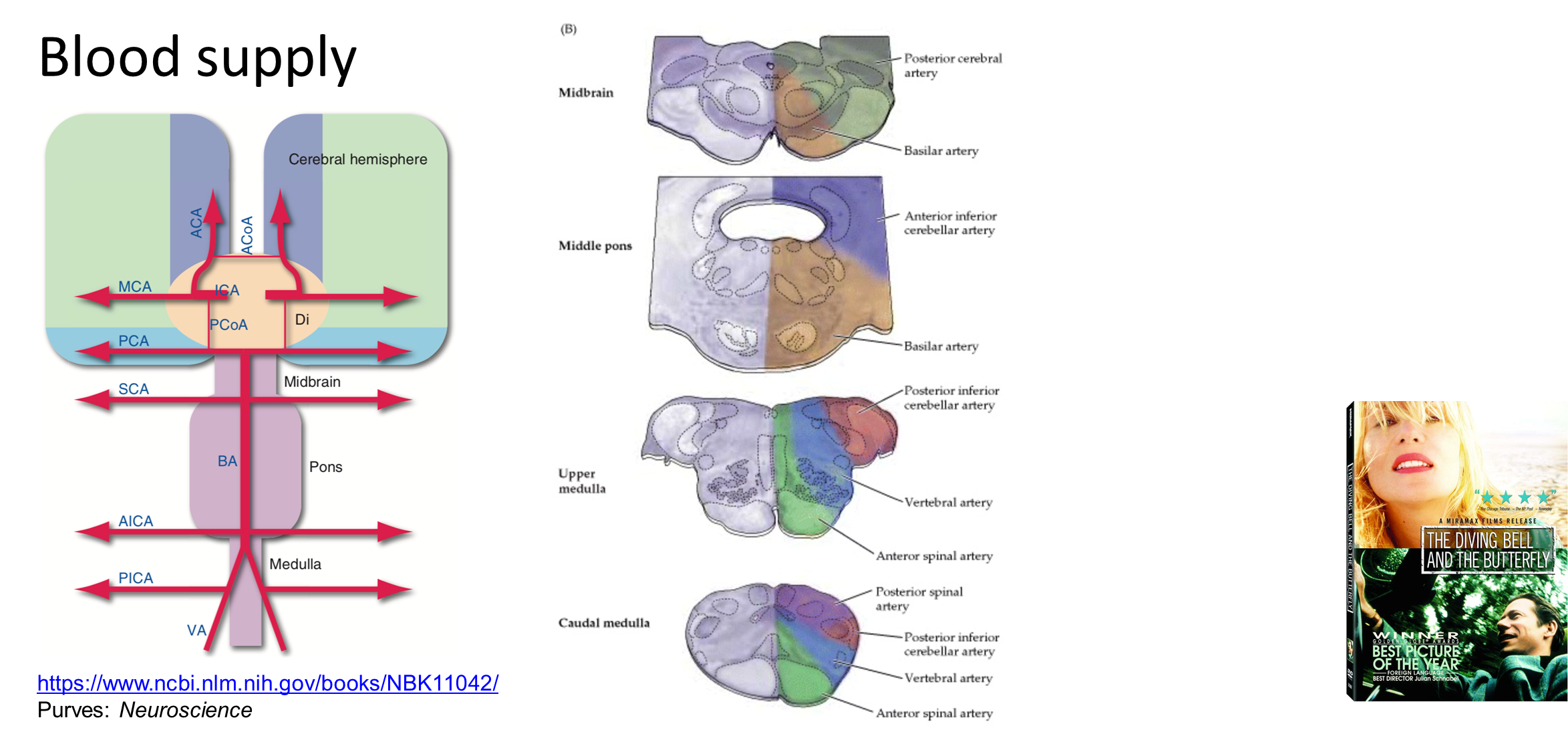
Midbrain
→ Posterior Cerebral and Superior Cerebellar Artery
Pons
→ Basilar Artery provides to the midline pons
→ AICA provides to the lateral pons
Medulla
→ Lateral Medulla is Posterior Inferior Cerebellar Artery
→ Medial Medulla is Vertebral Artery
What are the Neurotransmitter Nuclei (4)
Substantia Nigra (pars compacta)
→ produces dopamine and projects to the striatum for motor control
Ventral Tegmental Area
→ produces dopamine and projects to the limbic system and cortex for motivation and reward
Locus Coeruleus
→ produces norepinephrine
Raphe Nuclei
→ produces serotonin which is involved in mood, pain and sleep

Describe the organization of the caudal medulla
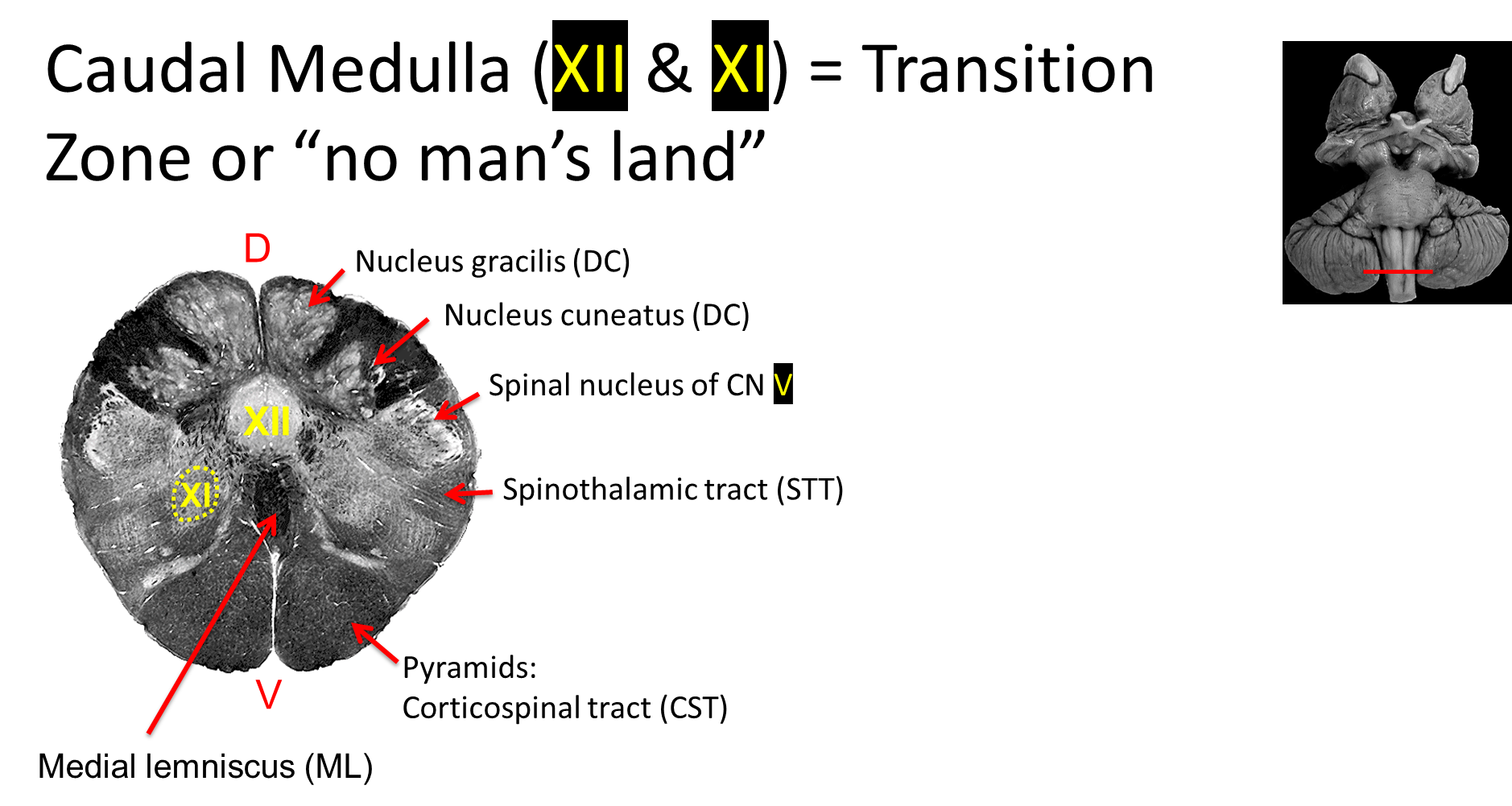
Caudal Medulla is not actually medulla, but the area immediately below the medulla where most nerves will decussate
1) Nucleus Gracilis and Nucleus Cuneatus
→ carry information regarding vibration, proprioception, and two point differentiation from the lower body
→ will decussate and meet at the medial lemniscus
2) Spinal Nucleus of Trigeminal Nerve
→ carries the pain and temperature sensory information from the trigeminal nerve where it will travel upward with the spinothalamic tract
3) Spinothalamic Tract
→ carries pain and temperature information from the entire rest of the body
4) Importantly, in this portion of the brain, CN XII becomes the core/midline of the brain, but every other part it is dorsal
→ this occurs because it is pushed down by the nucleus gracilis and cuneatus
5) XI the accessory nerve is also found slightly here as well, even though it is found mostly in the spinal cord